 Mason Brooks
Mason Brooks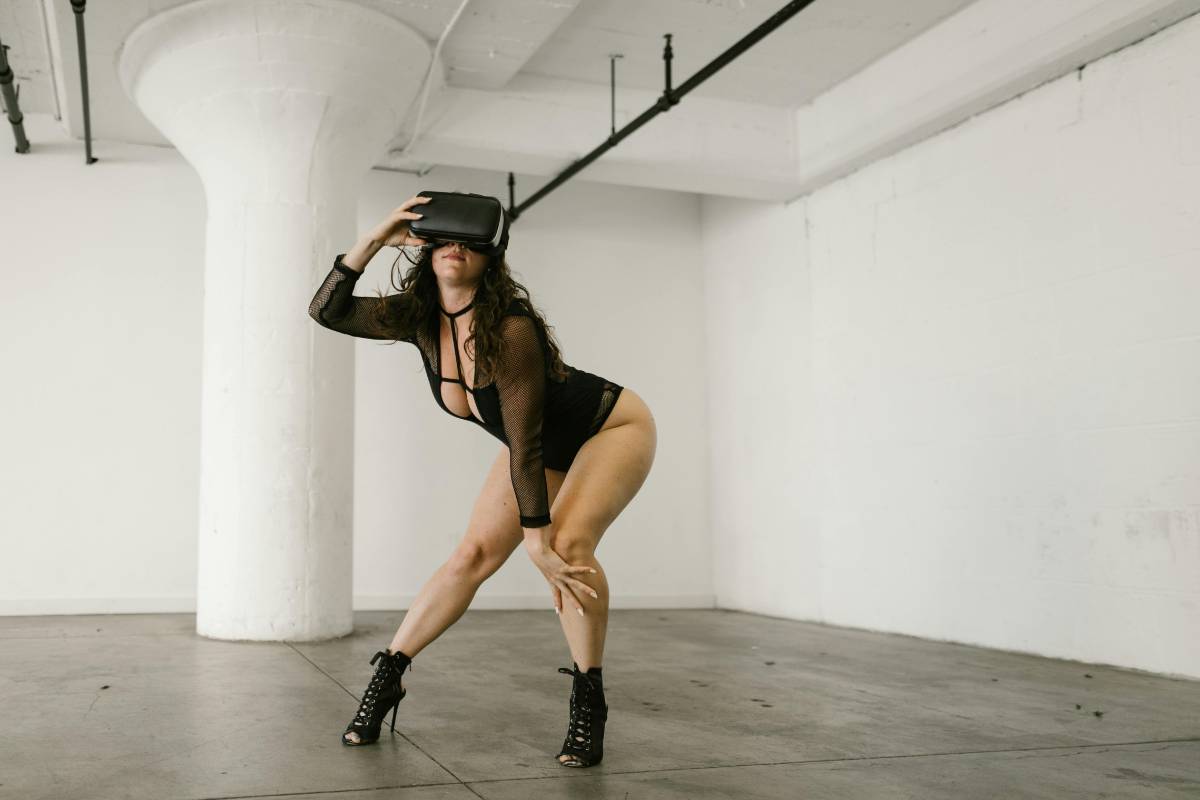
Boutique
How High-End Boutiques Are Blending Art, Fashion & Tech
In 2025, high-end boutiques are no longer just shopping destinations—they are immersive galleries, digital labs, and sensory playgrounds. As luxury brands redefine retail, they’re seamlessly blending art, fashion, and technology to offer next-level experiences that cater to the modern consumer’s craving for meaning and interaction.***1. The Store as a CanvasLuxury fashion houses are transforming their retail spaces into works of art. Prada’s New York flagship features rotating exhibitions curated in collaboration with contemporary artists. Loewe’s boutiques integrate ceramic installations, while Louis Vuitton showcases custom-designed architecture that changes with seasonal collections.***2. Augmented Reality DisplaysAR technology is turning boutique windows and interiors into interactive showcases. At Burberry’s Tokyo store, customers can scan displays to see digital animations overlaid on real garments. Dior’s in-store mirrors allow virtual fittings, letting customers visualize different sizes, colors, and styles instantly.***3. AI-Powered PersonalizationArtificial Intelligence is at the heart of modern boutique experiences. Brands like Farfetch and Gucci are using AI to analyze browsing behavior, style preferences, and previous purchases. In-store, smart assistants and digital stylists offer real-time, curated recommendations tailored to each visitor.***4. Immersive Art InstallationsBoutiques are collaborating with artists to turn shopping into cultural immersion. Hermès has introduced kinetic sculptures and immersive soundscapes, while Byredo merges fragrance with digital light installations. These artistic elements elevate retail to an emotional and aesthetic journey.***5. Fashion-Tech Labs Inside StoresSome luxury brands now host innovation labs within their boutiques. Chanel’s Paris location features a fashion lab where guests can explore fabric technologies, 3D printing, and sustainable material development. This transparency showcases the brand's commitment to craftsmanship and future-forward design.***6. Digital Runways and Virtual StylistsIn-store digital runways offer previews of entire collections. Clients can sit in a boutique and experience a fashion show via surround screens. Brands like Balmain and Versace are also integrating virtual stylists via tablets or AR glasses, offering advice based on body type, climate, and event type.***7. NFT Fashion & Digital CollectiblesSome high-end boutiques are entering the Web3 space. Dolce & Gabbana and Givenchy now offer limited-edition NFT accessories alongside physical counterparts. These digital collectibles are presented through interactive displays in-store, offering customers ownership of both fashion and art in the digital realm.***8. Scent and Sound DesignBrands are now investing in bespoke scents and curated soundtracks to evoke emotion and deepen brand recall. Le Labo boutiques blend fragrance creation with ambient playlists. Meanwhile, Tom Ford stores incorporate sound design that evolves as you move through the space.***9. Smart Architecture and SustainabilityBoutiques are using smart lighting, kinetic walls, and sustainable materials to marry aesthetics with ethics. Stella McCartney’s stores feature modular designs powered by renewable energy, while Bottega Veneta uses sensors to adjust lighting based on time of day and customer flow.***10. Artistic Events and Pop-Up GalleriesHigh-end retailers are hosting fashion-art hybrids such as live painting sessions, projection mapping events, and interactive fashion sculpture shows. These limited-time events draw in crowds not just for shopping, but to experience creativity in motion.***ConclusionIn the fusion of art, fashion, and tech, high-end boutiques are redefining the very nature of luxury. They’re not just selling products—they’re crafting narratives, evoking emotion, and connecting with customers through immersive innovation. This is the future of fashion retail—where culture meets commerce in breathtaking harmony.
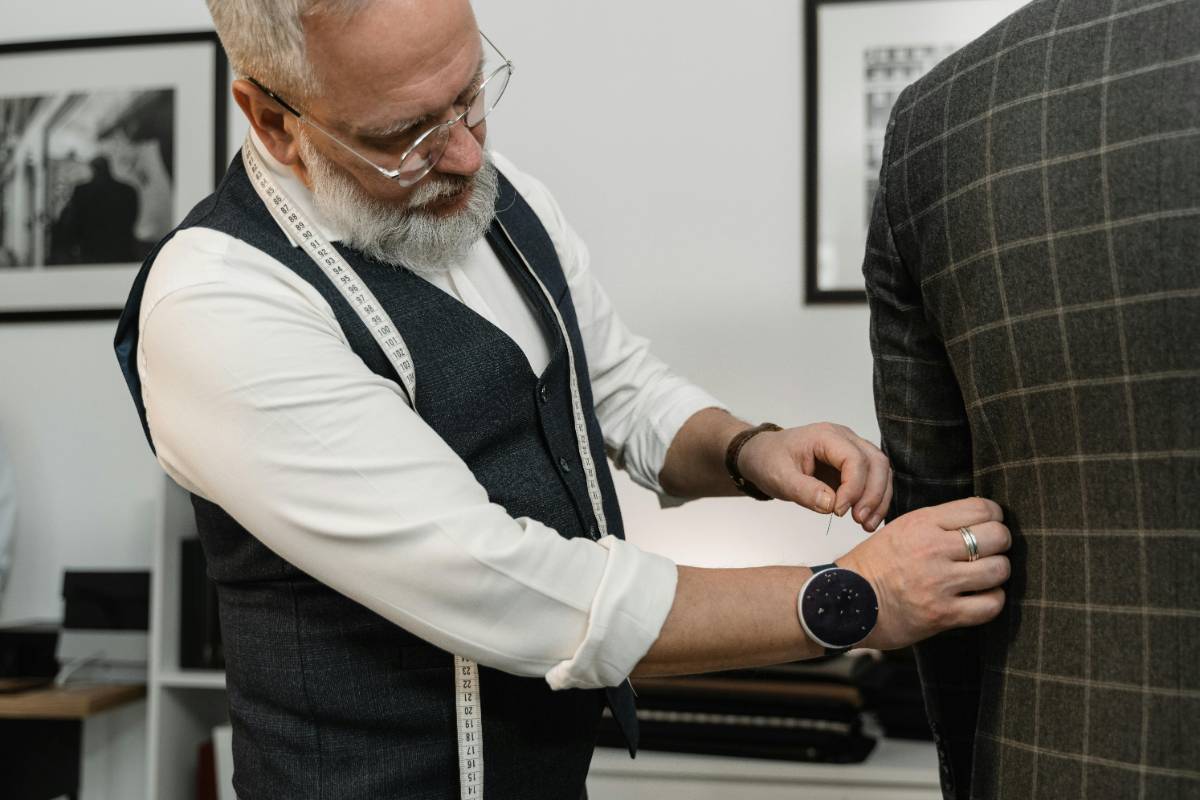
Boutique
Bespoke Over Brands: The Rise of Artisanal Luxury Boutiques
In an age dominated by mega fashion houses and logo-heavy culture, a quieter, more meaningful luxury movement is gaining ground—artisanal boutiques offering bespoke experiences. These small-scale operations prioritize craftsmanship, individuality, and soul over mass production and brand status.***1. The Shift Toward PersonalizationModern luxury consumers are seeking connection. They no longer want to be one of many wearing the same item. Artisanal boutiques provide tailored pieces, often handmade, that speak to the client’s story and preferences. It's a return to authenticity in a world of mass labels.***2. Heritage Techniques, Modern AestheticsFrom hand-stitched leather goods in Florence to custom-woven textiles in Kyoto, artisanal boutiques preserve centuries-old techniques while adapting to contemporary design sensibilities. These pieces are not just worn—they're lived in and passed down.***3. Craftsmanship as StatusToday, true luxury is less about logos and more about the labor and love behind a piece. Owning a hand-forged ring from a local goldsmith or a custom suit from a third-generation tailor is a badge of taste and cultural literacy.***4. A Slow Fashion EthosArtisanal boutiques emphasize quality over quantity. Instead of following seasonal trends, they produce fewer items with greater care. This slow fashion approach not only supports sustainability but also deepens the emotional value of each purchase.***5. Global Names, Local RootsSome artisans have garnered global acclaim while staying rooted in their local communities. Labels like The Row, Loro Piana, and Gabriela Hearst are celebrated for their use of fine materials and quiet luxury, often produced in close collaboration with skilled craftspeople.***6. Design Meets DialogueWalking into an artisanal boutique often feels like entering an artist’s studio. There’s room for conversation, discovery, and education. Customers learn about materials, process, and story—making each purchase a richer, more informed choice.***7. One-of-a-Kind PiecesCustomization is at the heart of artisanal luxury. Whether it’s a monogrammed leather wallet, a fragrance formulated just for your skin, or hand-painted loafers, these items feel uniquely yours. No two pieces are ever exactly alike.***8. A Rejection of Fast ConsumerismThis movement is also a conscious departure from the fast-paced, trend-driven retail cycle. Instead of impulse buys, customers of artisanal boutiques often build lasting wardrobes of items that gain character over time.***9. Interior Design Reflects CraftThe boutiques themselves reflect their ethos—warm lighting, natural materials, and intimate layouts. You won’t find giant video walls or digital installations here. Instead, you’ll find reclaimed wood counters, ceramic vases, and handwoven textiles.***10. The Future of Luxury is HumanAt its core, artisanal luxury is about people—makers and buyers—connecting through beauty and intention. As consumers continue to value experience, story, and authenticity, these small-batch boutiques are redefining what it means to live luxuriously.***ConclusionThe rise of artisanal luxury boutiques signals a powerful shift in consumer values. In a world obsessed with speed and scale, the desire for human touch, meaningful design, and craftsmanship is carving its own elegant path. Here, luxury is not worn loudly—it’s lived quietly, purposefully, and beautifully.
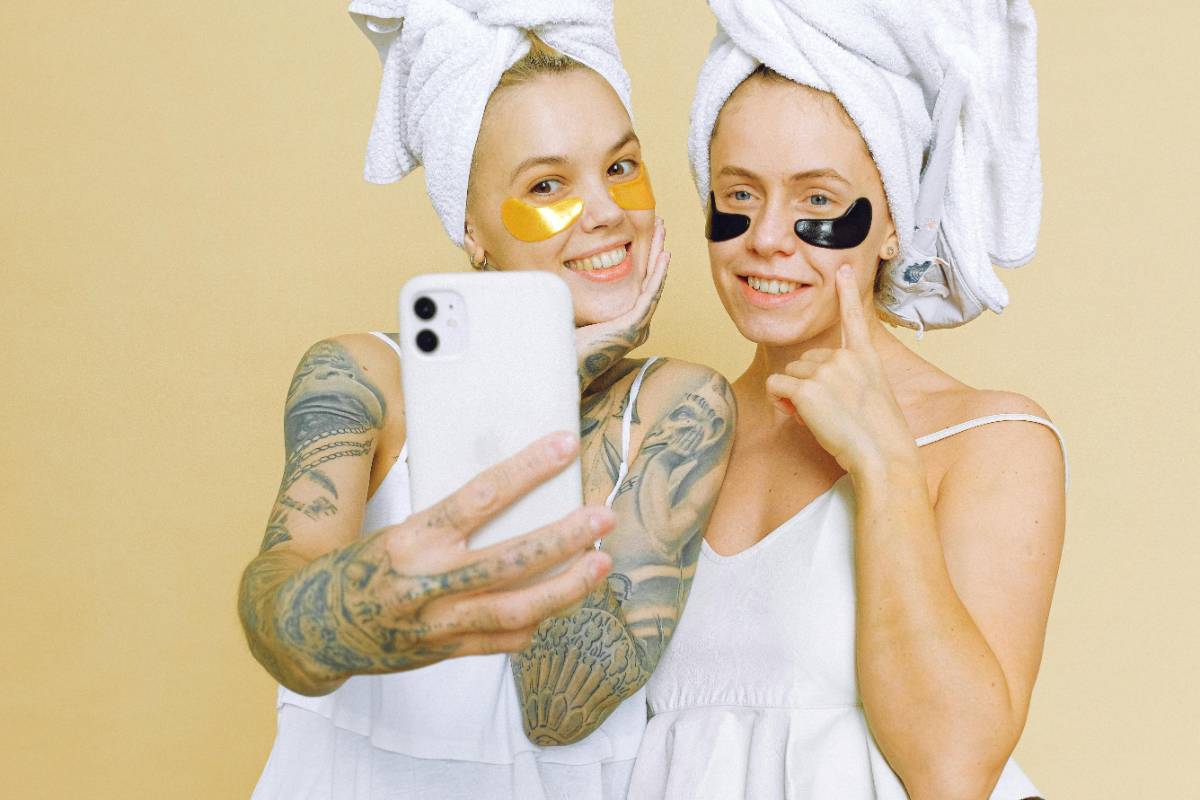
Wellness
Wellness at Home: The $100,000 In-Home Spa Trend
In a world where convenience meets luxury, the concept of in-home spas has evolved into an elite wellness movement. Forget day passes and scheduled appointments — wellness is now being built into the blueprint of the home. Welcome to the $100,000 in-home spa trend, where serenity, skincare, and state-of-the-art technology blend seamlessly into private living.***1. Spa as the New Status SymbolFor today’s wellness-conscious elite, luxury isn’t just about what you wear — it’s about how you live. Home spas have become a new status symbol, reflecting a commitment to self-care and personal sanctuaries. These spaces feature handcrafted saunas, chromatherapy showers, Himalayan salt walls, and marble plunge pools.***2. Customization is KeyNo two luxury spas are alike. Designers and wellness architects work closely with clients to tailor every square inch. Want a eucalyptus-infused steam chamber next to a meditation pod? Or a marble massage table with heated drawers for oils? Everything is curated, from the scents to the soundscapes.***3. Smart Spa TechnologyThe modern in-home spa is wired for precision. From voice-controlled lighting to automated aromatherapy cycles, technology plays a central role. Touchscreens embedded in walls adjust humidity, temperature, and LED colors to create a mood-enhancing environment at the push of a button.***4. Signature Treatments at HomeLuxury homes now feature treatment menus once exclusive to 5-star resorts. Think oxygen facials, cryotherapy, red light therapy, and detox wraps — all performed by on-call aestheticians or live-guided via holographic screens. Beauty meets biotech in the comfort of your bathrobe.***5. The Rise of Wellness DesignIt’s not just about function — aesthetics matter. Designers use limestone, teak, and terrazzo to create earthy, calming spaces. Soft lighting, built-in waterfalls, and curated greenery bring nature indoors, supporting mental tranquility as well as physical rejuvenation.***6. Fitness IntegrationWellness at home extends beyond relaxation. In-home spas are paired with private gyms, infrared yoga rooms, and biofeedback-equipped meditation zones. This holistic approach blends strength, recovery, and mindfulness into a singular flow.***7. Celebrity InfluenceStars like Jennifer Aniston, Zac Efron, and Gwyneth Paltrow have invested in lavish wellness setups. Their homes feature everything from float tanks to cold plunge basins — sparking a desire among luxury homeowners to replicate the celebrity self-care lifestyle.***8. Healing Through Light and SoundSound baths and light therapy are gaining traction in these personal oases. Sonic panels and frequency-tuned speakers provide calming vibrations, while full-spectrum lighting resets circadian rhythms. These features offer psychological relief from the digital chaos outside.***9. Beyond the BathroomToday’s in-home spa isn’t confined to one room. Steam lounges open into rooftop gardens, and hydrotherapy tubs are placed beside panoramic windows. Bedrooms feature spa-style oxygenation and aromatherapy diffusers to extend wellness into rest.***10. Is It Worth the Investment?For those who can afford it, the answer is yes. A six-figure in-home spa isn’t just a luxury — it’s a lifestyle upgrade that enhances physical, emotional, and even social well-being. It also boosts property value and reduces the need for outside travel and memberships.***ConclusionThe $100,000 in-home spa is more than a trend — it’s a reflection of how luxury is being redefined in a wellness-driven world. As homes become havens, the line between living and healing continues to blur, offering serenity and sophistication in every steam-filled breath.
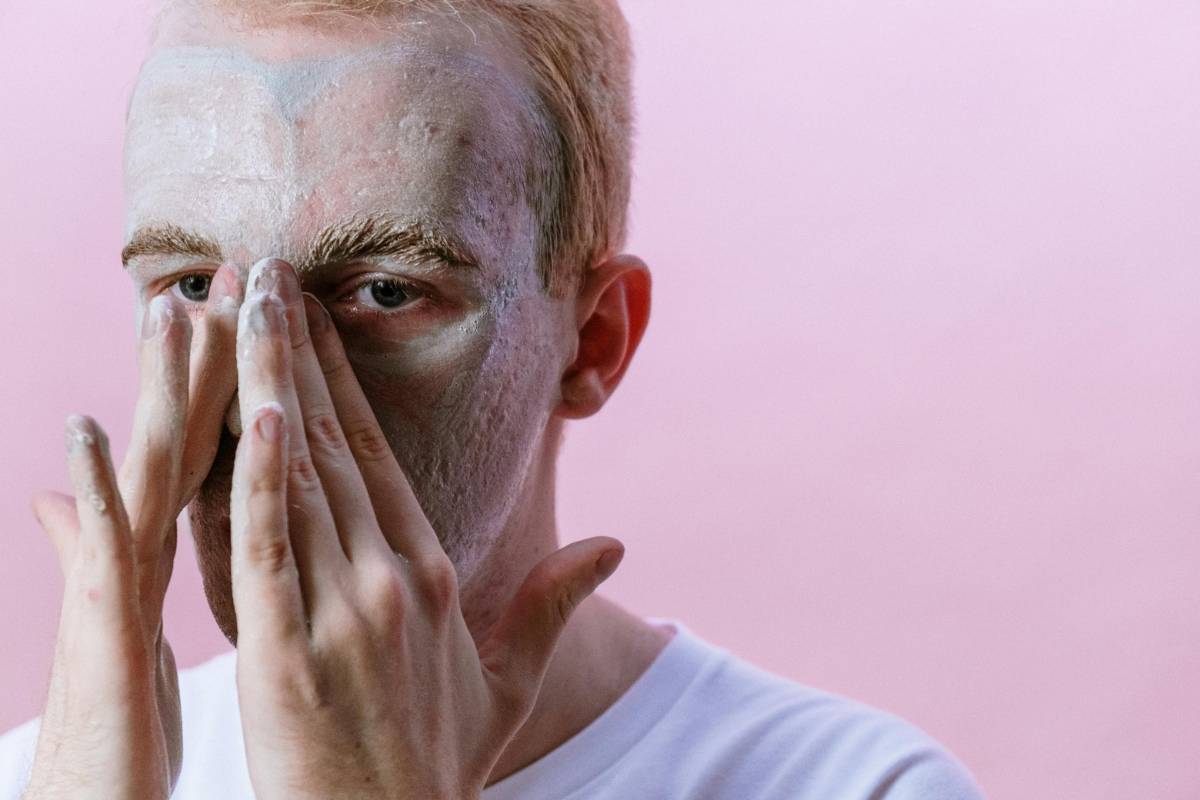
Wellness
Are Personalized Supplements the New Face of Wellness?
Wellness is becoming deeply personal. As consumers demand more tailored solutions for their health goals, personalized supplements are emerging as a groundbreaking trend in the luxury wellness market. Fueled by data, diagnostics, and cutting-edge nutrition science, these customized formulations promise to deliver what your body needs—and nothing it doesn’t.***1. The Shift From Generic to PersonalizedTraditional one-size-fits-all supplements are giving way to hyper-personalized regimens. Whether it’s a lack of energy, poor sleep, hormonal imbalance, or stress, consumers want targeted solutions. Brands are responding with custom blends based on health quizzes, DNA analysis, or blood work—designed to support individual biochemistry.***2. Data-Driven WellnessLeading companies use AI and biometric feedback to build supplement profiles. Through apps or test kits, users share information on sleep habits, dietary restrictions, mood, and physical performance. This data is used to generate a unique formulation that adapts over time—bridging the gap between wellness and tech.***3. Luxury Supplement Brands Take the LeadHigh-end wellness names like HUM Nutrition, Rootine, and Baze are elevating the supplement game. These companies offer sleek packaging, subscription models, and premium ingredients—from bioavailable vitamins to adaptogens and nootropics. It’s wellness with a designer edge, appealing to the health-conscious and style-savvy alike.***4. DNA and Microbiome Testing IntegrationSome brands take personalization a step further, incorporating genetic or gut microbiome testing. Results reveal predispositions to vitamin deficiencies, inflammatory responses, and digestion issues. Supplement plans are then curated to address these findings—creating a wellness roadmap that's as unique as your fingerprint.***5. Convenience Meets ConsistencyPersonalized packs are portioned and delivered in daily doses, removing the guesswork. Whether it’s morning boosters or night-time relaxers, everything is pre-arranged. Luxury clients value this ease, as it supports adherence and makes supplementation part of an elevated daily ritual.***6. Wellness Becomes Subscription-BasedMonthly personalized supplement boxes are now a staple of high-end wellness routines. Subscription models offer automated deliveries and ongoing updates based on feedback or retesting. The service element—complete with coaching and support—adds a concierge touch to nutritional self-care.***7. Transparency and Clean FormulationsLuxury wellness consumers demand more than results—they expect transparency. Top brands disclose sourcing, processing methods, and scientific backing for each ingredient. Formulations are clean, often vegan, non-GMO, and free of fillers or artificial additives. It’s about purity with performance.***8. Supplements as Status SymbolsA sleek vitamin case on your desk or a personalized nutrition app on your phone has become a subtle sign of status. These tailored regimens reflect self-awareness, discipline, and investment in one’s well-being. In elite circles, wellness is no longer silent—it’s branded, shared, and admired.***9. Beyond Pills: Personalized Powders and ElixirsThe format is evolving, too. Luxury supplement brands now offer custom powders, tonics, and elixirs that can be added to smoothies or water. These blends often feature superfoods, peptides, and botanicals, crafted for function and flavor—turning health into a lifestyle experience.***10. The Future: Adaptive Wellness SolutionsThe next frontier is real-time adaptability. As wearable tech gathers health metrics daily, supplement routines will evolve accordingly. Soon, AI will adjust dosages based on stress, sleep, or hormone fluctuations—creating living formulas that respond to life’s rhythms.***ConclusionPersonalized supplements are more than a trend—they’re a transformation. They represent a move toward intentional, data-informed self-care. As technology and wellness continue to merge, tailored nutrition becomes a reflection of personal power, luxury, and the future of health. For today’s elite, wellness isn’t just personalized—it’s precision-engineered.

Wellness
Inside the $10,000 Wellness Retreats of the Elite
For the world’s elite, wellness isn't just a lifestyle—it’s a luxury investment. The $10,000 wellness retreat has emerged as the ultimate reset for those seeking to rejuvenate mind, body, and spirit in utmost opulence. These retreats cater to individuals who consider self-care a form of high art and a tool for long-term success.***1. What $10,000 Buys You in WellnessFrom private beachfront villas to personalized menus crafted by Michelin-starred chefs, these retreats offer a curated experience. Guests are treated to spa therapies that go far beyond the usual—think oxygen chambers, lymphatic drainage massages, and stem cell facials. Every touchpoint is designed for maximal healing.***2. Exotic Locations, Secluded EscapesHidden in the Swiss Alps, tucked away on Balinese cliffs, or floating in the Maldives—these retreats are deliberately isolated to shield clients from the world and bring them back to themselves. The scenery alone provides a meditative calm, with curated natural settings that support emotional release and deep relaxation.***3. Personalized Healing ProtocolsGuests undergo genetic and metabolic testing upon arrival. The results inform customized detoxes, movement therapy, IV infusions, and biohacking techniques like red-light therapy and cryotherapy. Nutrigenomic diets, mindfulness coaching, and precision supplementation are also part of the wellness arsenal.***4. Luxury Meets Ancient WisdomModern science merges with centuries-old traditions—Ayurveda, TCM, and shamanic healing—to offer holistic restoration. Treatments are led by world-renowned practitioners flown in for exclusivity. From Reiki healers to Tibetan monks, these retreats honor ancient modalities in five-star comfort.***5. Digital Detox and Mindful LivingPhones are surrendered. Days begin with sunrise yoga and silent hikes. Evenings conclude with guided journaling, crystal sound therapy, and stargazing. Silence and slowness become the new indulgence. Guests are encouraged to disconnect not only from tech but also from ego-driven routines.***6. Elite Clientele, Discreet SurroundingsCelebrities, royalty, and CEOs are regulars. Staff are trained in discretion, and some retreats go as far as NDAs to protect privacy. It’s a place to be human, not public. Group sizes are limited, and private suites are acoustically designed to ensure complete serenity.***7. Beyond the Retreat: Lifestyle ReinventionThe retreat doesn't end at check-out. Guests leave with a blueprint for wellness—daily schedules, supplement plans, custom fitness regimens, and remote consultations ensure transformation continues back home. Some even offer at-home chef and therapist visits as part of ongoing support.***8. The Price of Ultimate Self-CareWhile the cost may seem extravagant, for the ultra-wealthy, it's the price of preservation. These retreats are more than vacations—they are investments in vitality, clarity, and longevity. For many, the return is not just in physical renewal, but in sharper decision-making, better relationships, and inner balance.***ConclusionThe $10,000 wellness retreat is not just a getaway; it’s a statement. In a world that moves too fast, the elite are choosing stillness, intention, and profound personal care—at a price only few can afford. These sanctuaries are where true transformation begins and where tomorrow’s power moves are born in silence and sweat.
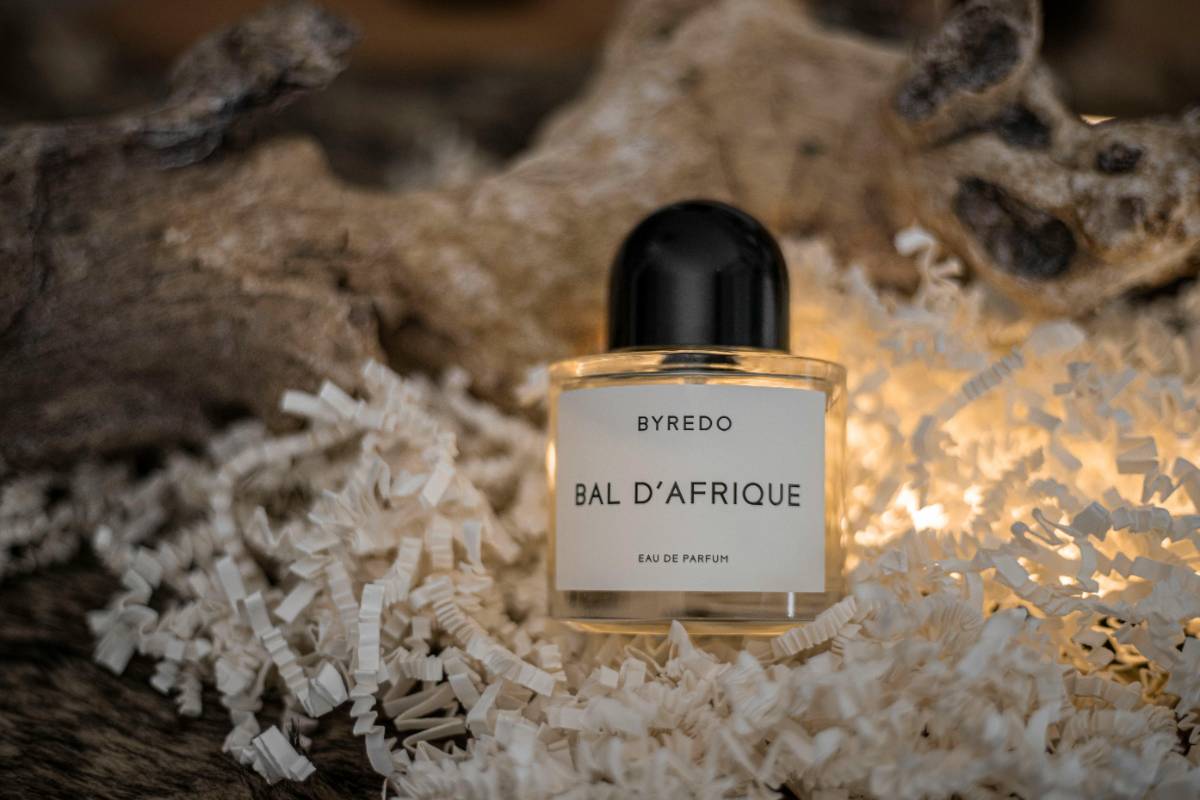
Fragrance
Inside the World’s Exclusive Perfume Boutiques
Step beyond the department store counters and into the opulent world of exclusive perfume boutiques—where scent meets storytelling, and luxury knows no bounds.***1. A Curated ExperienceThese boutiques aren’t just shops; they are temples of fragrance. Designed to heighten the senses, every detail—from lighting to music—is curated to complement the perfumes they showcase.***2. Personalized ConsultationsExpect a bespoke experience. Skilled fragrance consultants guide you through a sensory journey, learning about your tastes, lifestyle, and skin chemistry before suggesting a scent.***3. Rare and Niche CollectionsUnlike mainstream retailers, exclusive boutiques offer limited-edition scents, artisanal brands, and private collections that can’t be found anywhere else.***4. Global HotspotsFrom Paris’s Maison Francis Kurkdjian to New York’s Aedes de Venustas and Dubai’s Ghawali, these fragrance sanctuaries reflect their city’s culture and olfactory preferences.***5. Fragrance Libraries and ArchivesMany luxury boutiques house archives of historic perfumes, rare oils, and discontinued treasures—available for special order or private sniffing sessions.***6. Custom Fragrance CreationSome boutiques go a step further, offering made-to-measure perfumes. With the help of a master perfumer, clients can co-create a signature scent crafted to their exact desires.***7. Artistic PresentationFragrance flacons here are as captivating as the scents inside. Expect crystal bottles, hand-painted labels, and gold-plated stoppers that turn perfume into an objet d'art.***8. Elevated ServiceFrom velvet-gloved staff to champagne on arrival, the level of service offered is impeccable. It’s not just a purchase; it’s a luxury ritual.***9. Exclusive EventsBoutiques often host intimate fragrance launches, perfumer meet-and-greets, or scent discovery evenings for loyal clients and perfume enthusiasts.***10. Souvenirs Beyond ScentMany of these boutiques also offer fragrance-inspired candles, bath oils, and silk scarves that allow you to carry the boutique experience into your home.***ConclusionFor fragrance lovers, visiting an exclusive perfume boutique is like stepping into another world—one where scent becomes memory, identity, and indulgence. It’s a reminder that true luxury is in the details.
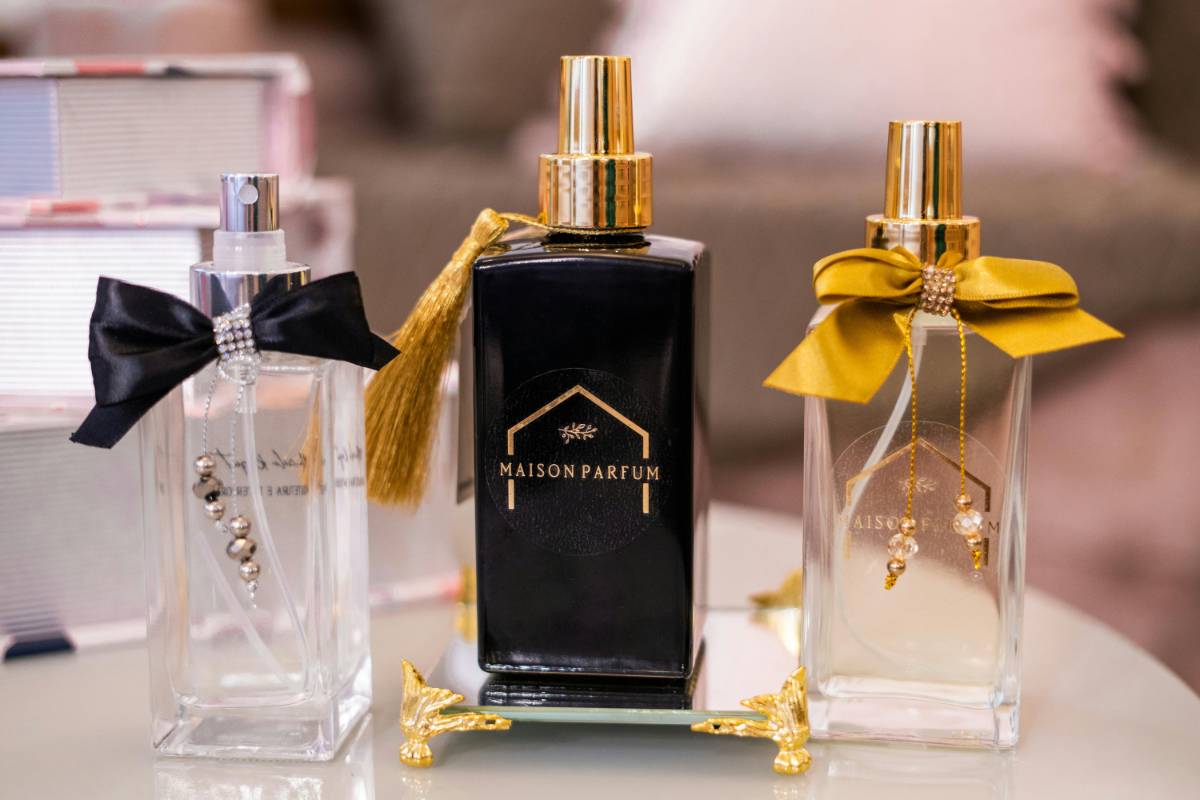
Fragrance
Maison Francis Kurkdjian vs. Roja Parfums: A Fragrance Faceoff
In the rarefied world of luxury fragrance, two names stand out for their artistic vision, opulent formulas, and cult-like followings: Maison Francis Kurkdjian and Roja Parfums. Both houses are helmed by master perfumers and are celebrated for pushing olfactory boundaries. But which brand reigns supreme? Let’s compare them note by note.***1. The Visionaries Behind the BrandFrancis Kurkdjian became a sensation in the fragrance world after creating Jean Paul Gaultier’s Le Male at just 26. His house, launched in 2009, reflects a balance of classic French elegance and modern minimalism. Roja Dove, on the other hand, is known for his flamboyant British charm and ultra-luxurious style, blending traditional perfumery with unapologetic opulence.***2. Star FragrancesMaison Francis Kurkdjian’s Baccarat Rouge 540 is a global phenomenon—loved by celebrities like Rihanna and Drake for its amber-floral signature. Other hits include Aqua Universalis and Oud Satin Mood. Roja Parfums boasts Elysium, Scandal, and the decadent Roja Haute Luxe, all admired for their complexity and rich character.***3. Signature StyleMFK emphasizes transparency, smoothness, and airiness. His scents often feel ethereal yet persistent—like olfactory silk. Roja Parfums leans toward boldness, with compositions that are layered, dramatic, and long-lasting. If MFK is whispered poetry, Roja is an operatic masterpiece.***4. Ingredient PhilosophyBoth brands use the highest quality raw materials, but Roja Parfums is particularly obsessive about rare ingredients—oud, ambergris, and Taif rose appear frequently. Kurkdjian favors balance and refinement, often using modern synthetics to sculpt unique textures and longevity without overpowering.***5. Bottle Design and BrandingMFK’s minimalist glass bottles with crisp white labels reflect Parisian chic. Baccarat Rouge 540’s golden-red hue has become iconic. Roja’s packaging is more extravagant—crowned caps, gold plating, and velvet-lined boxes. It’s luxury with a capital L, designed to be proudly displayed.***6. Price PointRoja Parfums generally comes with a higher price tag, especially in the haute collections. MFK, while still firmly in the luxury bracket, tends to offer a wider pricing spectrum. Roja appeals to those seeking the ultra-elite, while MFK balances luxury with relative accessibility.***7. Celebrity and Pop CultureMFK enjoys wide celebrity attention, with Baccarat Rouge 540 frequently appearing in social media beauty hauls and TikTok reviews. Roja Parfums, while less mainstream, is a staple among niche fragrance collectors and elite clientele who seek exclusivity over trendiness.***8. Performance and ProjectionBoth houses are known for longevity, but Baccarat Rouge 540 is famed for its “sillage bomb” quality. Roja’s creations also offer beast-mode performance, often designed to last 12+ hours and command a room. If projection is your priority, both deliver in spades.***9. The X-FactorKurkdjian’s genius lies in creating universally appealing yet artistic scents that feel effortlessly luxurious. Roja Dove crafts bold, signature fragrances meant to be remembered. One speaks to quiet confidence, the other to regal extravagance.***10. Final VerdictChoosing between Maison Francis Kurkdjian and Roja Parfums comes down to personal taste. Prefer ethereal elegance and balanced compositions? MFK is your house. Crave drama, richness, and olfactory grandeur? Roja delivers. Both redefine luxury—but in very different ways.***ConclusionMaison Francis Kurkdjian and Roja Parfums represent two towering pillars in high-end perfumery. Whether you gravitate toward MFK’s understated sophistication or Roja’s unapologetic luxury, one thing is clear: both houses turn fragrance into art—and wearing them is an experience unlike any other.

Luxury Skincare
Is Your Skincare Routine Worth $1,000? We Break It Down
A glowing complexion often comes at a price, but is your skincare routine really worth $1,000? From cult creams to gold-infused serums, premium skincare can get expensive fast. We dive into what you're actually paying for—and whether it's really worth the splurge.***1. The $1,000 Skincare LineupLet’s break down a typical luxury routine: a $150 cleanser, a $120 toner, a $200 serum, a $300 moisturizer, and a $250 eye cream. Add a $100 face mask and you’ve easily hit the $1,000 mark. Each step promises rejuvenation, hydration, and youthful radiance—but do the results justify the cost?***2. Ingredient Spotlight: Worth the Hype?Luxury skincare often highlights high-tech or exotic ingredients: peptides, retinol, caviar extract, 24k gold, or marine collagen. While these sound impressive, their effectiveness depends on concentration and formulation—not just the label. You're often paying for sourcing, R&D, and exclusivity.***3. The Power of PackagingPresentation is a major cost factor. Weighty glass jars, magnetic lids, and gold-plated spatulas signal prestige but add little to the formula’s performance. However, they play a key role in creating a premium user experience that feels indulgent and memorable.***4. Science vs. StorytellingMany luxury brands invest heavily in clinical trials, dermatological research, and patented delivery systems. Others rely more on storytelling and brand prestige. It’s crucial to distinguish between science-backed formulas and clever marketing.***5. Dupes That DeliverThere are plenty of mid-range brands offering similar actives—niacinamide, hyaluronic acid, ceramides—at a fraction of the price. Brands like The Ordinary, Paula’s Choice, and CeraVe are praised for delivering clinical results without luxury price tags.***6. What Dermatologists SayExperts often stress consistency over cost. A well-formulated $25 sunscreen used daily can be more effective than a $200 cream used inconsistently. Key advice? Know your skin type, stick to essentials, and invest where it matters most—like sunscreen and serums.***7. When to SplurgeInvesting in a luxurious moisturizer or serum may be worth it if your skin genuinely benefits or if it boosts your confidence. For those with specific concerns like hyperpigmentation or aging, high-end formulas with proven actives may offer noticeable results.***8. The Emotional ValueBeyond skin-deep benefits, skincare can be a ritual—bringing calm, confidence, and self-care. A $300 face cream might not change your life, but the way it makes you feel during application just might. This emotional return is part of what you’re buying.***9. Value in MinimalismA curated routine with a few targeted products can outperform a shelf full of luxury jars. Dermatologists often recommend a simple routine: cleanser, active serum, moisturizer, and SPF. Focus on effectiveness over excess.***10. The VerdictIs a $1,000 skincare routine worth it? It depends. For some, the luxury, efficacy, and experience are priceless. For others, smart formulations at lower prices offer better value. The key lies in knowing what your skin needs—and what you're really paying for.***ConclusionSkincare is personal, both in results and spending. Whether you choose to splurge or save, the smartest investment is in knowledge—understanding ingredients, formulations, and your unique skin. Because great skincare isn’t about price—it’s about what works for you.
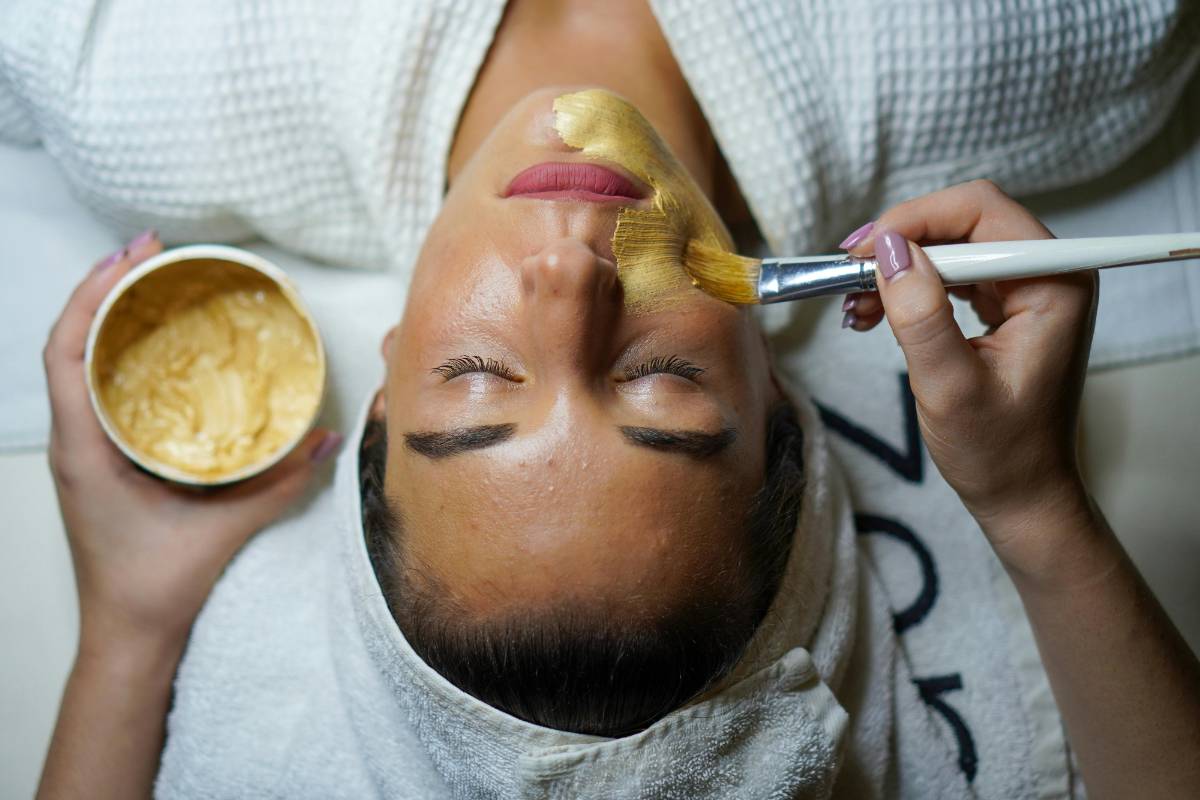
Luxury Skincare
24K Facials: The Ultimate Skincare Indulgence?
When it comes to luxury skincare, few treatments are as indulgent and eye-catching as the 24K gold facial. With its roots in ancient beauty rituals and a clientele that includes A-list celebrities, gold-infused facials have become the gold standard for opulent skincare.***1. What is a 24K Facial?A 24K facial involves applying pure gold leaf or gold-infused products to the skin. Gold is believed to stimulate collagen production, improve skin elasticity, and impart a radiant glow.The gold is usually combined with hyaluronic acid, peptides, or antioxidants to enhance absorption and effectiveness.***2. Origins of Gold in SkincareCleopatra was rumored to sleep in a gold mask to preserve her youthful beauty. Gold has been used in Ayurvedic and Chinese medicine for centuries due to its anti-inflammatory and rejuvenating properties.Modern skincare brands have adopted this ancient secret, turning it into a premium facial treatment.***3. The Science Behind the ShineGold nanoparticles are small enough to penetrate the skin barrier. Studies suggest they may improve blood circulation, reduce inflammation, and enhance the delivery of active ingredients.However, dermatologists argue that while gold has antioxidant potential, more clinical trials are needed to confirm long-term efficacy.***4. The Experience of a 24K FacialExpect a serene environment, luxury linens, and a multi-step process that includes cleansing, exfoliation, massage, and the application of gold-infused masks or sheets.The facial ends with a serum and moisturizer that lock in the gold’s glow, leaving your skin feeling pampered and luminous.***5. Celebrity EndorsementsFrom Victoria Beckham to Gigi Hadid, celebrities rave about the instant results of gold facials. Often a red-carpet prep choice, it promises tighter, dewy, camera-ready skin.High-end spas in Los Angeles, New York, and Dubai are known for offering this exclusive service.***6. Is it Worth the Price?A 24K facial can cost anywhere from $250 to over $1000, depending on the spa and treatment depth. While the glow is immediate, results may be temporary unless combined with consistent skincare.It's more of a luxury treat than a daily skincare necessity.***7. At-Home AlternativesBrands like Peter Thomas Roth, La Prairie, and Tatcha offer gold-infused masks and serums for home use. While less potent than spa treatments, they offer a taste of indulgence without the hefty price tag.Choose formulas with gold listed high on the ingredient list to ensure real benefits.***8. Potential Risks and ConsiderationsSome individuals may be allergic to gold or other metals used in the facial. Always patch-test new products and consult with a dermatologist if you have sensitive skin.Avoid treatments that use fake gold, as they may cause irritation or offer no benefit.***9. Luxury or Gimmick?The debate continues. While gold’s historical and symbolic appeal is undeniable, dermatologists recommend caution. Gold won’t replace retinoids or SPF, but it might enhance the sensory and hydration experience.As long as you're aware of the limits, a 24K facial can be a decadent escape from routine.***10. Who Should Try It?If you're preparing for a special occasion or simply want to pamper yourself, a 24K facial could be the golden ticket. It’s especially appealing to those who value the experience as much as the results.Great for dry, mature, or dull skin types looking for a quick, luminous boost.***Conclusion24K gold facials are the epitome of luxury skincare — rich in history, indulgence, and allure. While the science is still catching up to the sparkle, the treatment delivers an opulent experience that few others can match.Whether you're a skincare purist or a glam enthusiast, there's something undeniably magical about gilding your face in gold.
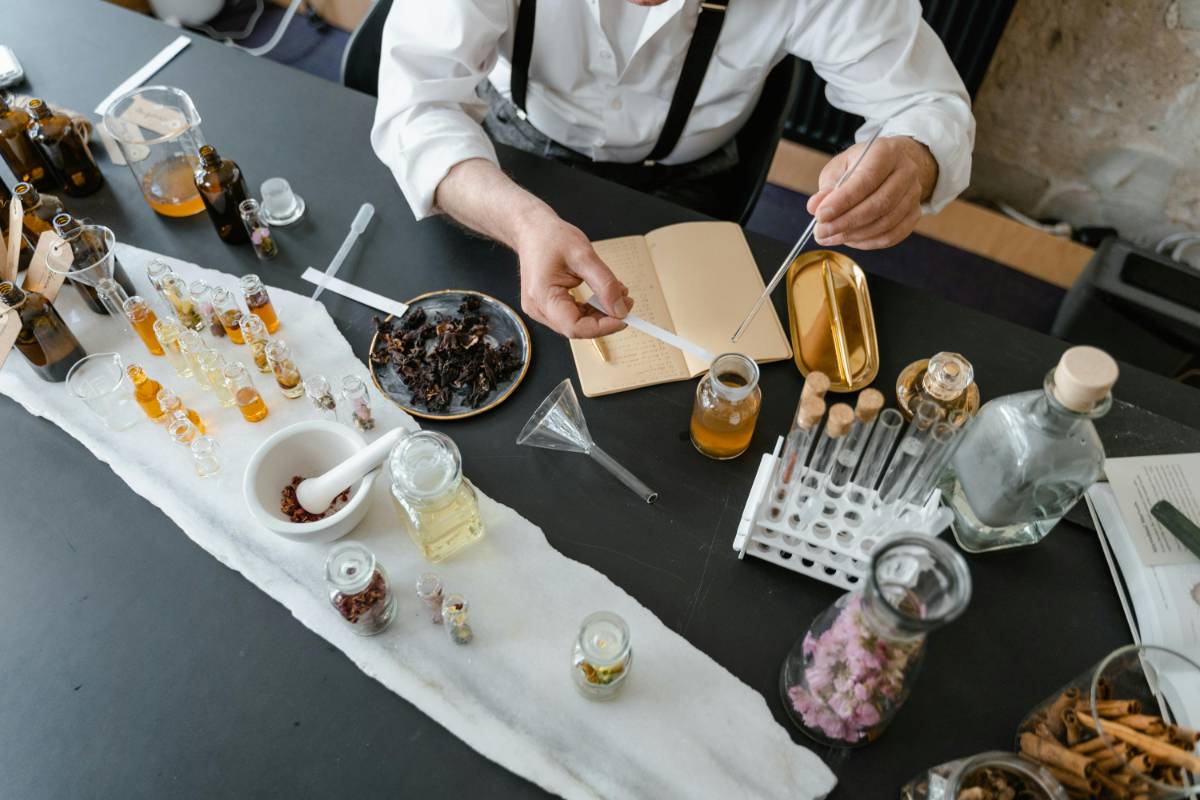
Luxury Skincare
The Science Behind Gold-Infused Skincare: Is It Worth the Splurge?
Gold has long been a symbol of luxury and opulence, but in recent years, it has become a prominent ingredient in high-end skincare products. From 24K serums to gold leaf face masks, this precious metal is being praised for its supposed anti-aging and anti-inflammatory properties. But is there real science behind these claims—or is gold-infused skincare just another luxury marketing trend?***1. The Allure of Gold in Beauty HistoryGold has been used in beauty rituals since ancient times. Cleopatra reportedly slept in a gold mask to maintain her legendary complexion. Similarly, ancient Chinese and Indian traditions incorporated gold for its rejuvenating qualities.Today, luxury brands are reviving this ancient trend in modern formulations.***2. Anti-Inflammatory PropertiesColloidal gold, a suspension of gold nanoparticles, is believed to have anti-inflammatory effects. It may help reduce skin redness, calm acne-prone skin, and support sensitive complexions.However, dermatological research is still ongoing, and results are not yet universally conclusive.***3. Collagen Stimulation ClaimsSome luxury skincare brands claim that gold boosts collagen production, enhancing skin elasticity and firmness. Gold is said to activate the basal cells of the skin, which in turn may reduce fine lines and wrinkles.But scientists remain divided—some say these effects are anecdotal rather than evidence-based.***4. Enhanced Product AbsorptionGold particles are also said to help other active ingredients—like hyaluronic acid, peptides, or antioxidants—penetrate deeper into the skin.This carrier effect might explain why gold is often used in multi-ingredient formulations.***5. Antioxidant and Anti-Aging BenefitsAdvocates say that gold has antioxidant properties, which can protect against environmental stressors and slow the skin’s aging process.Yet, compared to proven ingredients like vitamin C or retinol, gold still lacks large-scale clinical backing.***6. Sensory & Aesthetic ExperienceThere’s no denying that gold-infused products offer a sensorial luxury experience. The shimmering textures and metallic hues elevate a skincare routine into a ritual.For many users, the indulgence factor alone justifies the higher price point.***7. Risks and Skin ReactionsSome dermatologists caution that gold may cause allergic reactions in sensitive individuals. Patch testing is essential before using gold-based products.Also, not all "gold" skincare includes real or beneficial forms of gold—some may use gold-colored pigments purely for visual appeal.***8. Price vs. PerformanceGold-infused creams and masks can cost hundreds of dollars. Are they significantly better than non-gold alternatives? In many cases, results may depend more on accompanying ingredients and overall formulation quality.Consumers should look beyond the glamour and check for clinically proven actives.***9. Who’s Using It?A-listers like Victoria Beckham, Naomi Campbell, and Kim Kardashian have endorsed gold-based treatments. High-end spas and luxury brands like La Prairie, Chantecaille, and Tatcha also feature gold in flagship products.This celebrity-backed trend helps maintain gold’s allure in skincare.***10. Final Verdict: Hype or Holy Grail?Gold-infused skincare products do offer some benefits—mainly in terms of anti-inflammatory effects and luxury experience. However, the science isn’t unanimous. If you're seeking proven anti-aging results, ingredients like retinoids, peptides, and antioxidants should still be your primary focus.***ConclusionGold-infused skincare stands at the intersection of ancient beauty rituals and modern luxury. While the sparkle may captivate, it's essential to weigh clinical efficacy against aesthetic appeal. For those who value indulgence and sensory delight in their routine, gold skincare might be worth the splurge. But for strictly results-driven users, it might just be glittering temptation.
